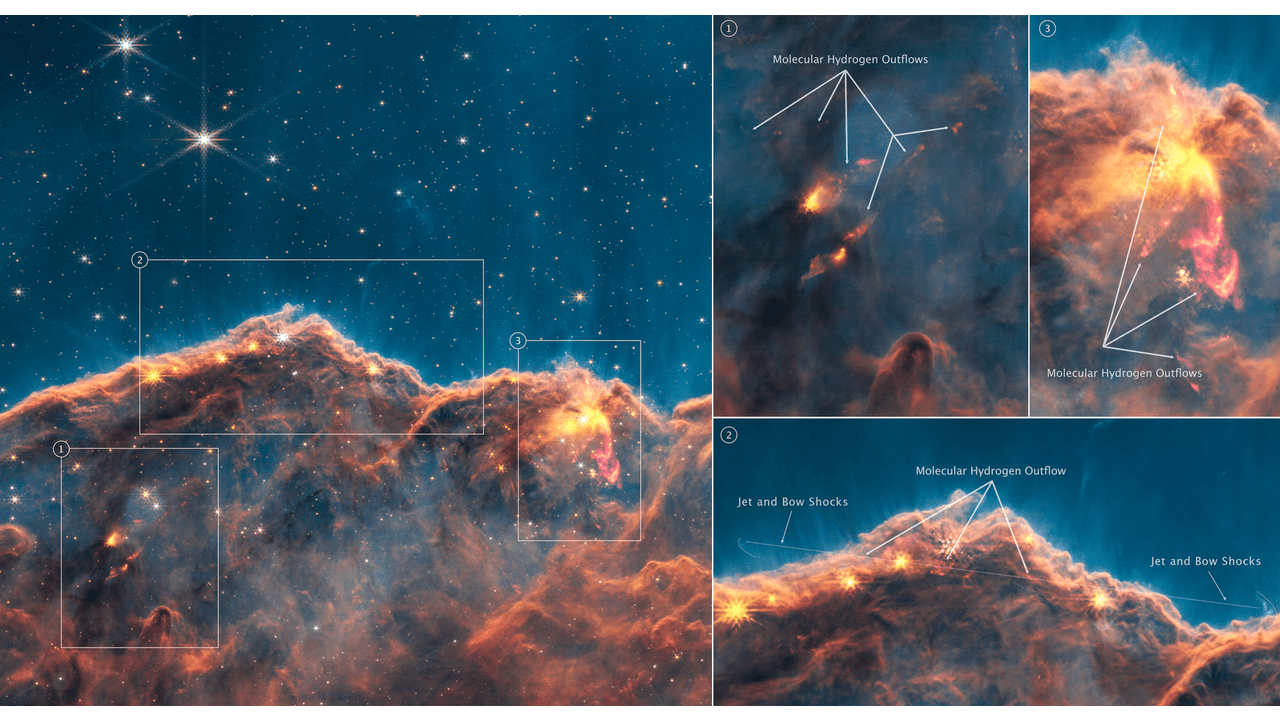A closer look at one of the first images produced by the JWST has revealed a treasure trove of young stars in a particularly exciting and mysterious stage of development
Astronomers at NASA have embarked on a “deep dive” into an image of the Cosmic Cliffs, a “coastline” of gas and dust found in the Carina Nebula, one of the brightest and largest nebulae where stars are born some 7,500 light-years from Earth. Some of the protostars that are being birthed here will go on to form low-mass stars, just like own our Sun.
An earlier version of this image was released back in July, but researchers are now studying it using a specific wavelength of infrared light. To their delight, it has revealed the presence of dozens of previously unknown outflows blasting out of extremely young stars.
“What Webb gives us is a snapshot in time to see just how much star formation is going on in what may be a more typical corner of the universe that we haven’t been able to see before,” Megan Reiter, lead study author and astronomer from Rice University in Texas, said in a statement.

A closer look at the new discoveries. Image credit: NASA, ESA, CSA, STScI
In this latest work, the jets were identified through the presence of molecular hydrogen, a vital ingredient for making new stars. As stars come into being, gathering material from the gas and dust around them, they blast out some of the material at their polar regions in high-powered jets. It’s a violent and destructive process, wiping out anything ahead that gets in its way.
Capturing this phenomenon is especially enticing as it only lasts for a mere 10,000 years, which is a momentary blip when you consider the multi-million-year process of star formation.
“Jets like these are signposts for the most exciting part of the star formation process. We only see them during a brief window of time when the protostar is actively accreting,” explained co-author Nathan Smith of the University of Arizona in Tucson.
Many of the new insights were only revealed thanks to the cutting-edge technology onboard the JWST, the most powerful and expensive space telescope ever created. Its high level of sensitivity and ability to see in the infrared allows the telescope to peer deeper into celestial structures than before, allowing astronomers to learn more about stuff like the early stages of star generation.
“It opens the door for what’s going to be possible in terms of looking at these populations of newborn stars in fairly typical environments of the universe that have been invisible up until the James Webb Space Telescope,” added Reiter. “Now we know where to look next to explore what variables are important for the formation of Sun-like stars.”
Source Link: Beautiful JWST Image Reveals New Insights Into How Stars Are Born